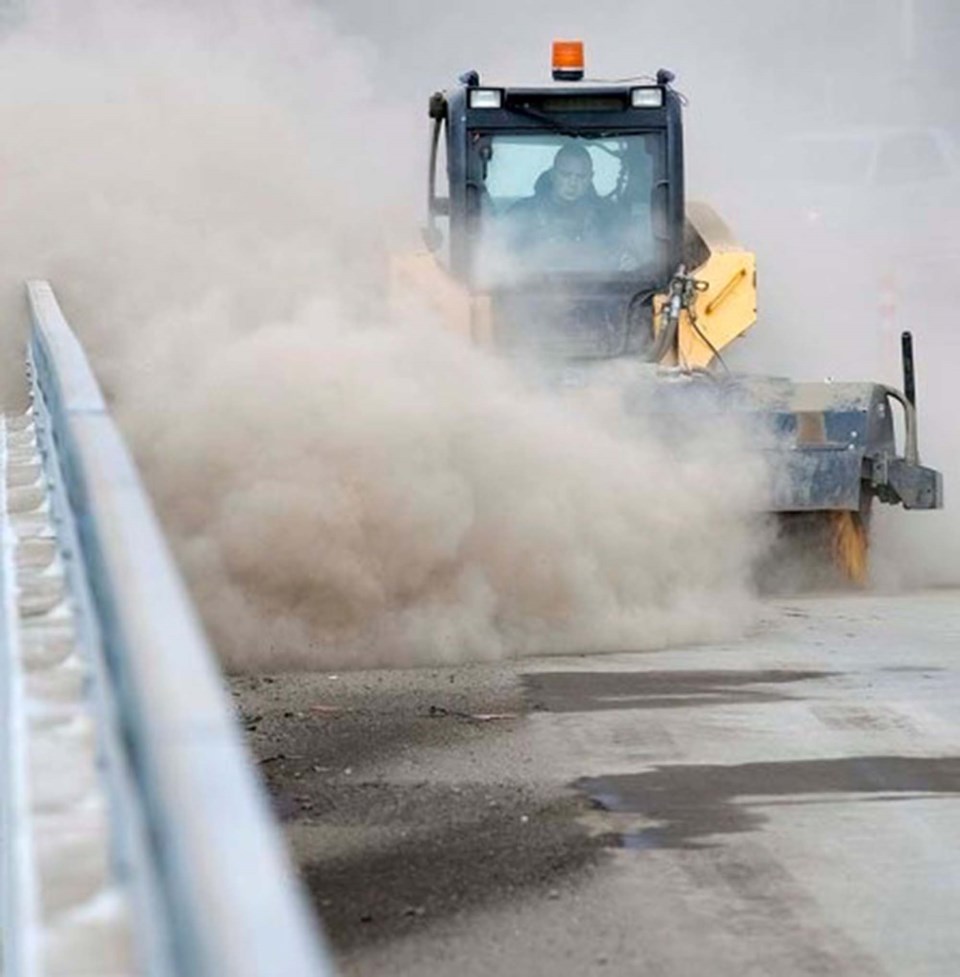St. Albert is exploring options for recycling its street sand, but the city’s operations manager says more research is required to determine whether a program might be viable.
John Potter, operations manager for the City of St. Albert, said the city stockpiles around 5,500 tonnes of sand for use in the winter to improve vehicle traction. After the sand is swept up in the spring, it is stored at the city’s compost yard. The cost of disposal for winter street sand would be around $150,000 annually, Potter said.
In 2014, the City of Edmonton agreed to recycle around 35,000 tonnes of used street sand St. Albert had stored up. The sand would have cost St. Albert some $1.3 million to dispose of.
However, Edmonton cancelled its recycling program in 2016, following a city audit highlighting management issues.
“For about the last four seasons, we’ve been hanging on to it to see if anybody else in the area was going to take up that service,” Potter said.
Recycling the sand is the city’s first choice due to the impact of landfilling on the environment, Potter said.
In the meantime, Potter said the city chips away at carrying the sand to the landfill during days when other programs are not in full swing, such as snow plowing. In addition to sand, the city also stockpiles other materials, including gravel, clay, and asphalt millings.
It all comes out in the wash
Once street sand is used in the winter, it becomes mixed with other elements such as silts and clays, meaning it can’t be reused. The process for recycling street sand includes washing it of these extra materials, draining it, and remixing it for street use.
Potter said the sand needs to be cleaned to provide enough traction for cars.
“Screening it to remove organics and litter is most likely not sufficient,” Potter said.
Street sand can also become rounded after being placed on the road, or undergoing a recycling process, Potter said. He added this consideration also has to be factored in to a recycling program, as the sharp edges of the sand are what provides the traction.
Some Albertan municipalities, such as Red Deer, have programs in place to recycle their street sand.
Doug Halldorson, roads superintendent for the City of Red Deer, said the city stockpiles their sand for a few years before sending it to a contractor for screening.
This recycling program has been in place in Red Deer since 2018.
Halldorson said the city does see a slight loss of traction with the sand after its screened, and when it gets too rounded they blend it with new sand.
Costs for the program are neutral, Halldorson said, because the recycling program saves Red Deer the cost of purchasing new sand and of disposing the old sand.
Potter said St. Albert has reached out to Red Deer to discuss their street sand recycling program, but will need to do more research before the city can determine if it is a viable option.
“We will be reviewing the program, but hope to focus on a regional collaborative approach, as St. Albert does not have the required equipment or personnel to undertake a recycling program on its own,” Potter said.
Regional municipalities in search of recycling options
Similar to St. Albert, the City of Spruce Grove also stockpiles sand for later transportation to an off-site landfill, spokesperson Amanda Doucette said in an email.
The City of Leduc recycles some of its sand from the centre of residential roads. However, city-spokesperson Celia Hui said via email sand swept from the curb often contains more debris, meaning the city must send it to the landfill.
“We continue to review opportunities for recycling the waste material; however, at this point in time options are limited,” Hui said.
Most of Sturgeon County’s street sand is not recovered during spring sweeping, spokesperson Jackie Sargent said, because recovery in rural areas is difficult.
“In comparison to a city with a fully integrated curb and gutter and storm sewer systems, the amount collected is not comparable,” Sargent said in an email.
The small amount the county does recover is stockpiled at the county shop in Morinville and later disposed after a testing process. Sargent said the county is open to future recycling initiatives should they arise in the region.
Potter said St. Albert is “continuously networking” with other municipalities to discuss ideas on how to reuse street sand.
“We will continue working towards a solution, but it must be balanced with public safety, fiscal responsibility, and environmental stewardship,” Potter said.




